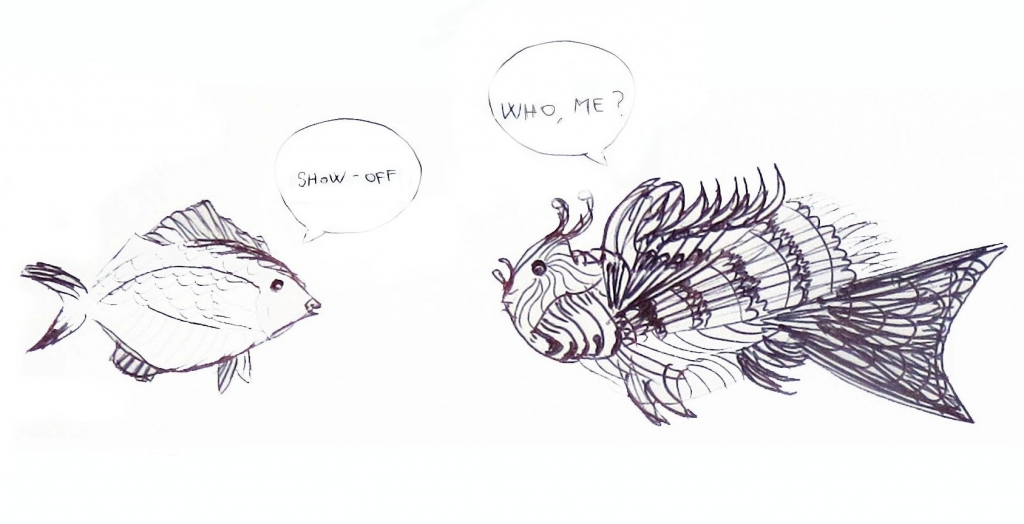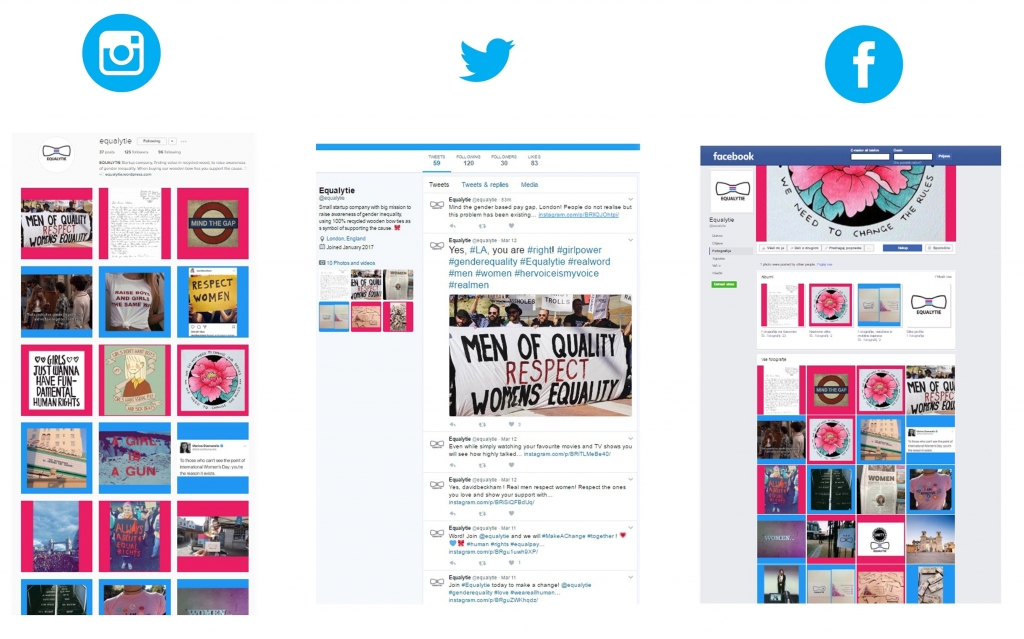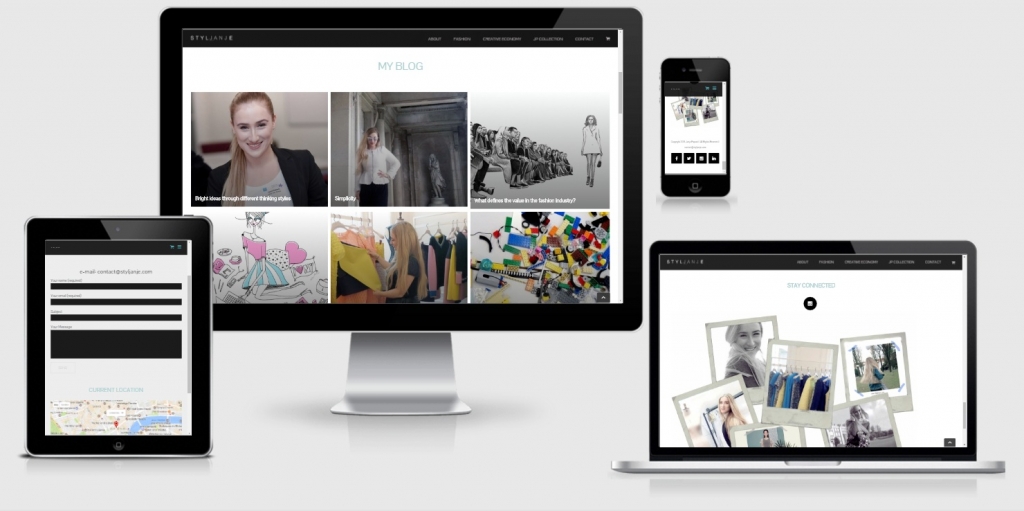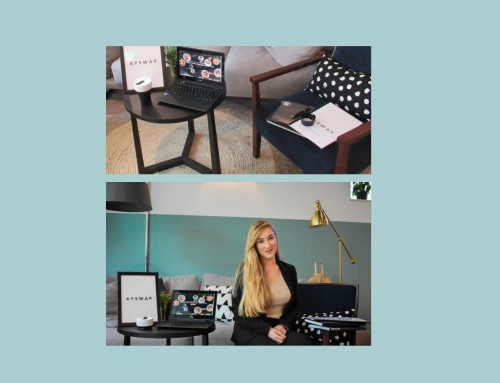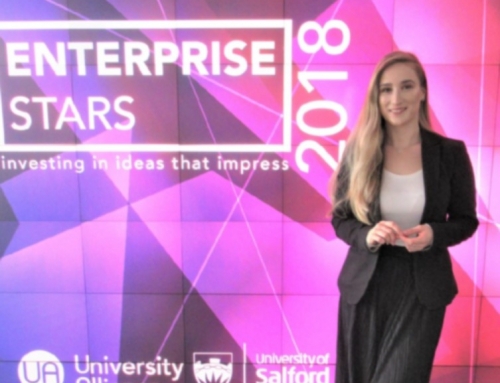On our first day of Design thinking for Start-up class, our course director said that through the module we would create a real business, sell our products on trade fairs and pitched our ideas. It sounded like a substantial responsibility. I was thrilled but also concerned, as I had many questions. During the introduction week, we went through the process of creating a group, converting ideas into the prototype and presented it. This deemed to summarise the whole year module.
I had done most of this in the past: from in-depth research to formulating the idea, prototyping, creating the designs, presenting it to others, selling it or showcasing it at Fashion weeks. However, I had never done all that process in a group. My undergraduate course in Fashion and Textile Design was encouraging individualism. It was requested from us to understand all the stages as fashion designers, from how to trend forecasting to knowing stores where we would like to sell our collections. I was used to doing the whole process by myself and none of these stages included any other opinion, except my lecturer’s, who would occasionally give some suggestions. The same approach was also executed in my Fashion module this year. However, Design Thinking For Start-ups module was the opposite. It encouraged teamwork and constant collaboration. I was looking forward to work in a group, learn from other individuals and get a knowledge from the business side. Especially, how to structure company, how to manage cash flow and how to choose the right people in the team. This module included interesting lessons as today I manage to understand all of this.
According to the Kelley and Kelley (2005), theory team should have an equal combination of leaders and followers. It also suggests that creating a team with diverse minds can be valuable when facing challenges. Amabile and Khaire (2008) principle inform that connecting people who are coming from a variety of backgrounds increase creativity. Design Thinking module combined a variety of individuals from the variety of courses, where we needed to chose a group after few weeks and create a business. Our group consisted of four unique individuals with different personalities, coming from a variety of social background with different skills. A great fit according to academic theories (Fisher, Hunter, Macrosson 1998, Amabile, Khaire, 2008, Kelley, Kelley 2014).
My role was chosen to be Managing and Design director. This included encouraging team to deliver great performance, ensured that company had a clear direction with plans to achieve the standard, designing products, flyers, business cards, packaging, creating video add, crowd funding campaign and arrange meetings. Fisher, Hunter, Macrosson (1998) explain that the ideal team should fulfil nine roles, what I could experience through the year when performing more of them. They suggest further that the most suitable team that would be able to tackle the complex problem would combine of six individuals, which I will take under the consideration in the future. The journey of Equalytie group gave me the ability to understand how to create a network of people to achieve my further goals, which includes establishing my own company.
Our venture made me realise how important is to surround yourself with people who know more than you do, the people you admire and always encourage you to get better, which is what I will pursue in my further career. Graham (2017) explains that “The people you work with had better be good because it’s their work that yours is going to be averaged with”. Team members are as your partners with who you will spend a lot of time with and Mullins (2013) urge that the connection in a team matter. I clearly know now that a business partner needs to complement my skills, but at the same time have the same core values. Only this will create an environment in the team that will lead to “…a degree of trust and co-operation” (Deakins and Freel, 2012, p.243). To create a great company’s culture Kelley, Kelley (2005) advise to include fun, minimalise hierarchy, have trust and suspend judgements.
No judgement in a team, everyone is different, my illustration
Naming our product Equalytie, our team was not equal in many aspects. Whether it came to the motivation, work ethic, values, further goals or vision of the company we run. All the mentioned characteristics that are crucial in a great team. I clearly understand now when our lecturer at the beginning of the course said that we should choose teammates that will have similar values, drive and motivation. Some of my team members had different motivations, which was noticeable at the end of the module when we were closing our company. Two out of four of us wanted to spread the profit we made through the year right after the trade fairs, whereas another person and I did not agree on that. We saw the further potential and wanted to invest further in the company. This was the breaking point when I realised that people have different motivators when they do certain work. The drive behind my teammate’s collaboration in the group was different to what motivated me. My motivation as a designer was to be able to create and put my ideas on the market. “Perhaps the most important quality, the one that is most consistently present in all creative individuals, is the ability to enjoy the process of creation for its own sake” (Csikszentmihalyi, 1996). Harvard Business Review (2017) in Inner Work Life describes that when people identify their work valuable the motivation of the person is going to be high. Creating was something that motivated me, however, even I was not aware of that at the beginning of our venture. After all, I was also the one who was pushing the margin of our product higher to achieve a quicker breakeven point. At that stage, I did not know that what would truly make me happy is the value and joy the product would bring to the people who have purchased our Equalytie bow ties. Not the high margin that resulted in the high profit. Key learning point from this process was the importance of finding the people who would have the same inner motivation as I have to create a company with the values and culture reflecting that.
Business culture in our class
Another important part of our enterprise was finance strategy. It was important to determine feasibility with pricey. We should not spend more than £1000 to launch, which helped me to gain understanding on how to start the lean business. For instance, in our company Equaytie, each of the group members contributed around £30, which meant that we launched the company with £120. Being fortunate enough to have the ability to use most of the facilities at the university, such as a laser cutting machine or using recycled wood for prototyping from leftovers of architecture students help us to reduce the cost. Versi (2013, p.15) is convinced that “…there is a direct link between creativity and economic power.” Our business proved that we were more creative when having fewer resources. Perhaps on the global scale economic power allow the organisation to bring more creative talent, however, this was not valid when considering our start-up.
Using creativity in prototyping and being a lean start-up, my illustration
We manage to produce a product manufactured in the UK for £0.32, selling it for £4,99 by adding emotional value to the gross margin of 93.56% and gross profit of £4.76. This was possible with offered facilities at the university and creative thinking. ‘Over-trading’ product in Woods (2012) opinion is the indication that a company is having unnecessary costs (too many employees, etc.) or not having a valid financial plan. He warns that start-ups should be conscious of unfamiliar chargers, which was remarkable in our case. However, with invested capital, we were able to cover the cost of attendance at the trade fairs and production of the bow ties. Withal, we had five years financial plan for the future, that would reduce the cost of manufacturing when buying laser cutting machine, but was unwisely outlined. We lacked knowledge in that field, therefore finances were our weakest point. Asthon (2012) address that rapid growth can be dangerous when considering start-up’s cash flow and should consider those number thoroughly. This is a valid point to consider for the future.
The module prepared us to professionally pitch our product and business plan to Unversity Dragons’ Den, where our finance section got lowest points. On contrary, our branding was our strength where we received no lower score than 8 out of 10 from all judges. This means that our packaging communicated properly with the product, enhanced its benefits in a well-designed format and reflected the brand’s image and style. These scores, therefore, reflects my personal strength and weaknesses in entrepreneurship. Judges’ final feedback was complimenting our company’s concept and branding strategy, adding: “It looks like you worked well as a team and are passionate about the cause”. Osterwalder et al. (2010) emphasise the importance of customers, infrastructure and financial viability in a business model, which in our case was not enough clearly portrayed.
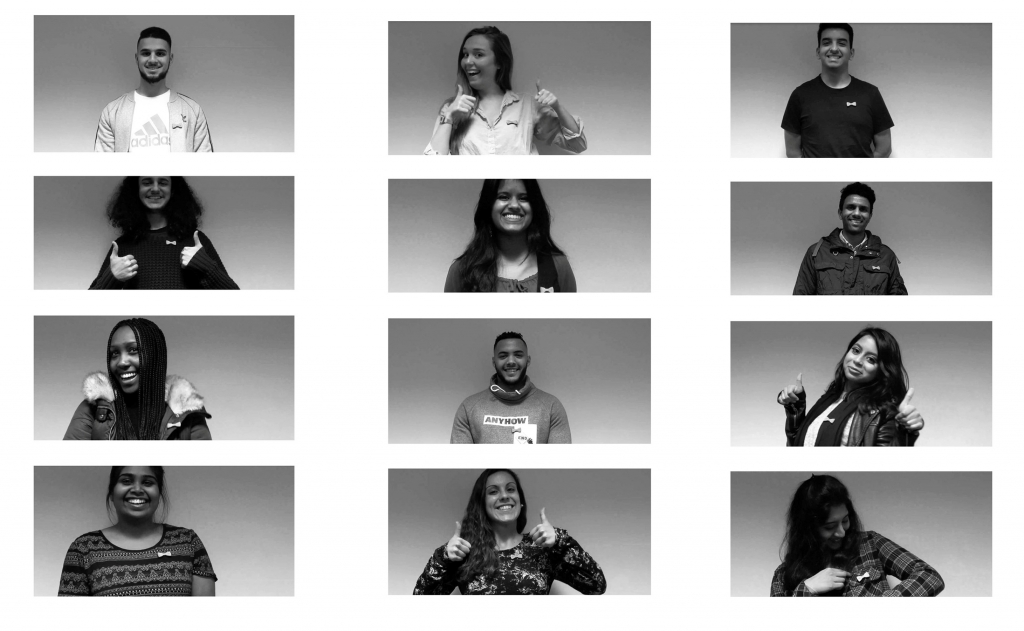 Customer oriented product. Our consumers were the main protagonist in our video add
Customer oriented product. Our consumers were the main protagonist in our video add
Social media strategy is the following element to be considered. The rise of social media with growing popularity represents a powerful tool to communicate (Newman, 2009) and Anon (2017) is convinced that the one’s next customer is being present online. Nonetheless, social media does not only build a relationship with the user (Dijck, 2013) but build the social capital that can reflect in brand’s trust. Social media in Dijck’s (2013) view represents the way of public communication, shaping new norm and rules. In order to have a successful strategy, he (2013, p.89) suggest to companies to balance “…their own interests with those of users, advertisers, third-party developers, shareholders and stakeholders.” I have gained an understanding that considerable large numbers of followers do not bring any value to the company nor personal life. The reason being is that numbers only reflect tangible statistic to marketers and does not necessary reflect the reputation of the brands, consumers’ engagement or satisfaction offline.
Equalytie’s strategy on social media was to raise awareness of gender inequality
Most importantly, the module also encouraged us to broaden our network. I attended a variety of workshops, events outside the university, such as Enterprise, Mayor’s competition, Google Campus London and other occurrences. There I managed to meet great individuals, with like-minded goals, who allowed me to learn outside the class as much as I learned in class. A particularly important part of a networking is an online persona, which I build with the professional presence on social media and reflection on my blog. The blog is an online platform that allows, not only chosen individuals to have their voice, instead of any user around the world to contribute the content (Kaplan, 2010). With my platform, I am able to develop data through algorithm provided presenting it in a user-friendly interface with my own style and strategy (Dijck, 2013, p.29). Writing a blog gave me more confidence sharing my interest in creativity and entrepreneurship. Additionally, it keeps me motivating to stay curious, read and master my understanding in the field of fashion and the creative economy. I will, therefore, continue to write my blog and share my thoughts even if the module is over.
‘Launching’ Creative economy tab on my blog as a result of this module
This eight months journey also through me the different leadership characteristic between creative leader and management leader. By implementation of the creative leadership in my future company, I am aware that it is important to recognise the strength of certain phases in individuals. Some people are better at coming up with the ideas, while other at executing them. Evaluating the different creative qualities among people is crucial to avoid a non-equal contribution in the teamwork (Amabile, Khaire 2008). Recent studies on Harvard Business Review (2017) shows that leadership that emphasises learning lead to employee’s willingness to share new ideas, which can flourishing business.
Creative leadership, stronger in a team, my illustration
A book Creative confidence was given to us at the beginning of our course and through the year I have realised that confidence plays a vital role in any aspect of our life or business venture. The importance of being confident through the year could be seen when choosing the right people for a team, choosing the right idea, setting a price for our product, meeting new people, creating an online presence, pitching, applying for competitions or selling our products at trade fairs. Besides being confident Williams (2006) describes the core characteristic of an entrepreneur which are having an urge to be independent, a need for achievement, comfortable with uncertainty, seeing opportunities, being innovative, talented, proactive, decisive with higher energy and self-motivated. Saying this, through our enterprise venture, attending the variety of networking events, workshops outside the class and combining theory with practical work I had to develop the confidence needed to be a fashion entrepreneur. I undrstand today that this can be achieved with the conductive collaboration in a team, dedication and the knowledge module gave me to enrich my fashion and textile background and launch my own creative business.
The power of team collaboration
REFERENCES
Amabile, T. and Khaire, M. (2008) ‘Creativity and the Role of the Leader’, Harvard Business Review, October 2008, p. 106.
Anon, (2017). Available at: (https://hootsuite.com/resources/guide/generating-leads-with-social-media) (Accessed 19 Apr. 2017).
Ashton, R., 2013. How to start your own business for entrepreneurs. Great Britain: Pearson UK. p.258-271.
Brain Pickings. (2017). How We Spend Our Days Is How We Spend Our Lives: Annie Dillard on Choosing Presence Over Productivity. Available at: https://www.brainpickings.org/2013/06/07/annie-dillard-the-writing-life-1/ (Accessed 19 Apr. 2017).
Best, K. (2015) Design Management: Managing Design Strategy, Process and Implementation. AVA.
Belbin, M. (2017). Belbin | Engage and develop the talent around you. Available at: http://www.belbin.com/about/belbin-team-roles/ (Accessed 25 Apr. 2017).
Blank, S. (2013). Why the Lean Start-Up Changes Everything. Harvard Business Review. Available at: https://hbr.org/2013/05/why-the-lean-start-up-changes-everything (Accessed 25 Apr. 2017).
Csikszentmihalyi, M., 1996. The creative personality. Psychology today, 29(4), pp.36-40.
Deakins, D. and Freel, M.S., 2012. Entrepreneurship and small firms. 6th edn.London: McGraw-Hill, p. 241-243.
Dorst, K. (2011) The core of ‘design thinking’ and its application. Design studies 32,(6), 521-532.
Dijck, J. (2013). The culture of connectivity. 1st ed. New York: Oxford University Press, p.19, 29, 33, 89.
Dmi.org. (2017). What is Design Thinking? – Design Management Institute. Available at: http://www.dmi.org/?WhatisDesignThink (Accessed 25 Apr. 2017).
Engeström, Y., 2001. Expansive learning at work: Toward an activity theoretical reconceptualization. Journal of education and work, 14(1), pp.133-156.
Fisher, S.G., Hunter, T.A. and Macrosson, W.D.K., 1998. The structure of Belbin’s team roles. Journal of Occupational and Organizational Psychology, 71(3), pp.283-288.
Furnham, A., Steele, H. and Pendleton, D., 1993. A psychometric assessment of the Belbin team‐role self‐perception inventory. Journal of Occupational and Organizational Psychology, 66(3), pp.245-257.
Harvard Business Review. (2017). Is Yours a Learning Organization?. Available at: https://hbr.org/2008/03/is-yours-a-learning-organization (Accessed 27 Apr. 2017).
Harvard Business Review. (2017). Inner Work Life: Understanding the Subtext of Business Performance. Available at: https://hbr.org/2007/05/inner-work-life-understanding-the-subtext-of-business-performance (Accessed 27 Apr. 2017).
Kaplan, A.M. and Haenlein, M., 2010. Users of the world, unite! The challenges and opportunities of Social Media. Business horizons, 53(1), pp.59-68.
Kelley, T., Kelley, D. (2014) Creative confidence. London: William Collins., p.175-200.
Martin, R.L. and Christensen, K. eds., 2013. Rotman on design: The best on design thinking from Rotman magazine. University of Toronto Press.
Martin, Roger (2009) The Design of Business: Why Design thinking is the Next Competitve Advantage. Harvard Business School Press.
Mazzarol, T. and Reboud, S. eds., 2011. Strategic innovation in small firms: An international analysis of innovation and strategic decision making in small to medium sized enterprises. Edward Elgar, p.111.
Mullins, J., 2013. The New Business Road Test: What entrepreneurs and executives should do before launching a lean start-up. 4th edition. Great Britain: Pearson UK, p.181.
Newman, N., 2009. The rise of social media and its impact on mainstream journalism. Reuters Institute for the Study of Journalism, 8(2), pp.1-5.
Osterwalder, A., Pigneur, Y., Clark, T., Smith, A. (2010) Business Model Generation : A Handbook for Visionaries, Game Changers, and Challengers. Hoboken , NJ : John Wiley & Sons, p.15.
Ries, E. (2011) The Lean Startup : How Constant Innovation Creates Radically Successful Businesses. London: Portfolio Penguin.
Ries, E. (2011) The Lean StartUp: How Constant Innovation Creates Radically Successful Businesses London: Portfolio Penguin.
Robinson, K. (2014). Life is your talents discovered | Sir Ken Robinson | TEDxLiverpool. Available at: https://www.youtube.com/watch?v=FLbXrNGVXfE (Accessed 25 Apr. 2017).
Robinson, K. (2006) Do Schools Kill Creativity Available at: https://www.ted.com/talks/ken_robinson_says_schools_kill_creativity?language=en (Accessed: 27 Apr. 2017).
University, S. (2017). Text of Steve Jobs’ Commencement address (2005). Stanford News. Available at: http://news.stanford.edu/2005/06/14/jobs-061505/ (Accessed 25 Apr. 2017).
Versi, A. (2013). ‘Unleashing the creative genie’, African Business, (402), 15.
Visocky O’Grady, Jenn & Ken (2006/2009) A Designer’s Research Manual: Succeed in Design by Knowing Your Clients and What They Really Need. Rockport Publishers.
Woods, C., 2012. Brilliant Start-Up: How successful entrepreneurs set up and run a brilliant business. Pearson UK.
Williams, C.C., 2008. The hidden enterprise culture: Entrepreneurship in the underground economy. Edward Elgar Publishing, p.17,18.


